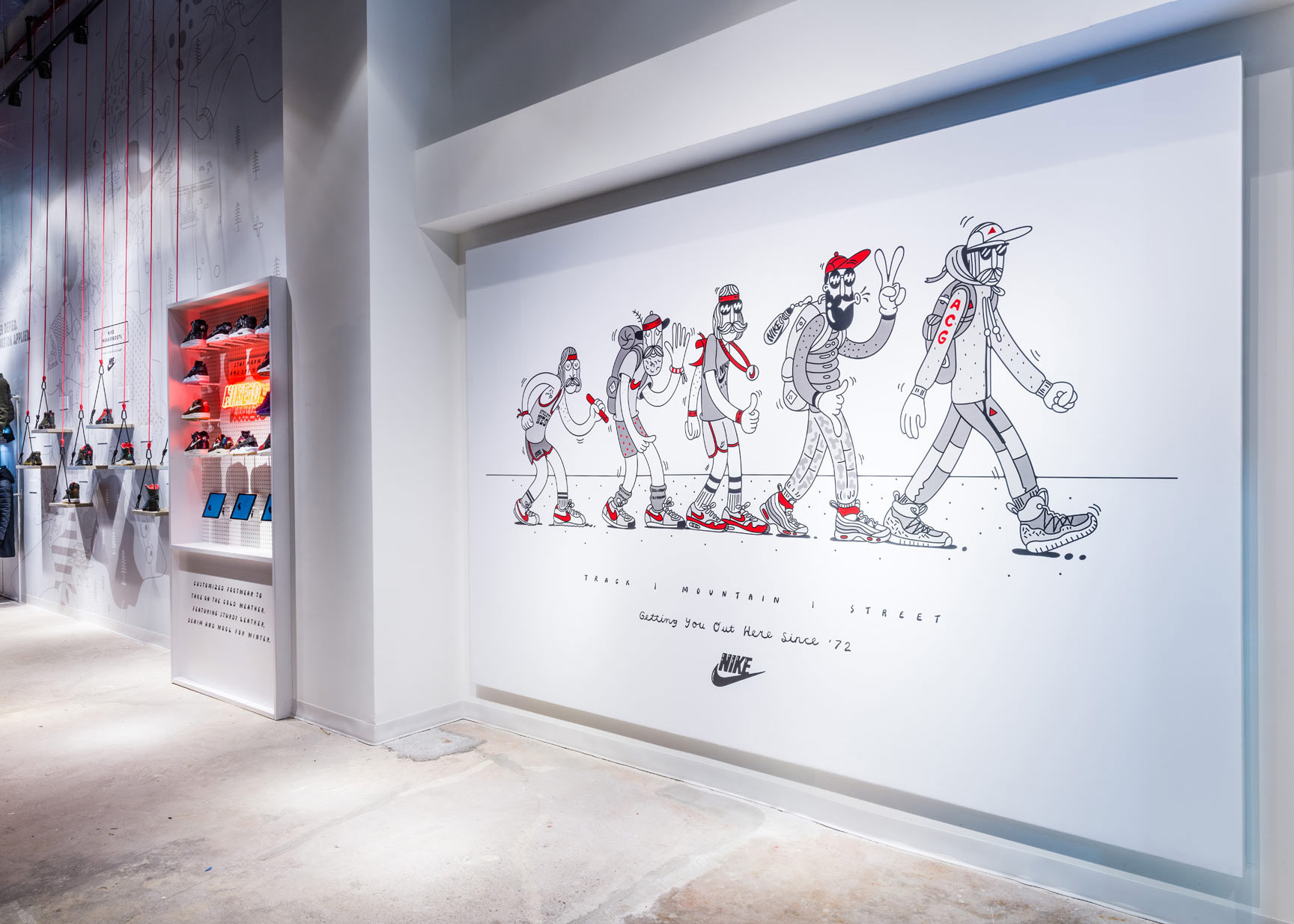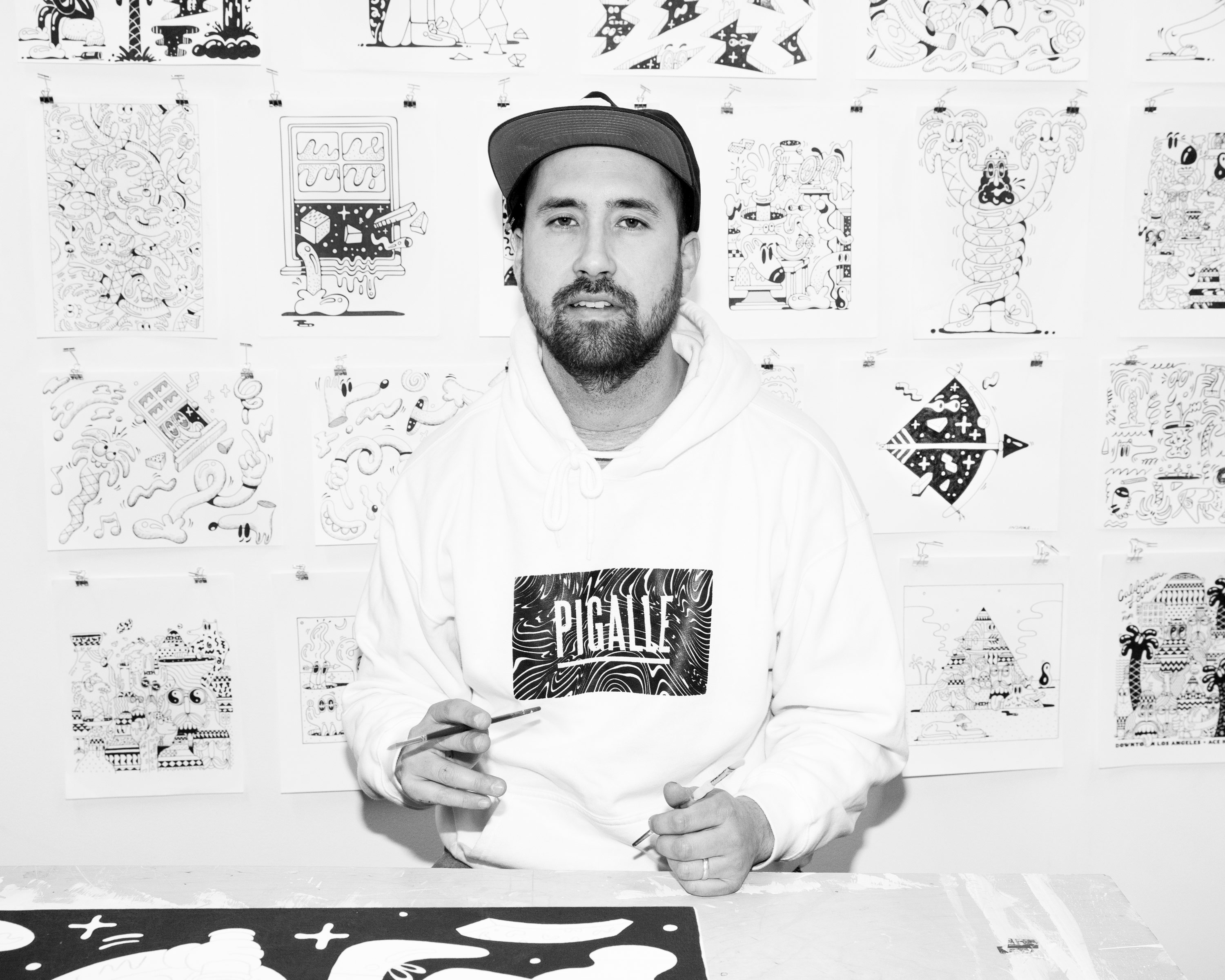
- Interview by Tina Essmaker April 12, 2016
- Photo by Brigitte Sire
Steven Harrington
- artist
- designer
- entrepreneur
Steven Harrington is an LA-based artist & designer and a cofounder of design firm, National Forest. Cited as the leader of a contemporary Californian psychedelic-pop aesthetic, Steven is best known for his bright, iconic style. Embracing a multimedia approach, his portfolio includes large-scale installations, hand screened prints, limited-edition books, skateboards, and sculptures. He has exhibited artwork in LA, NY, Paris, Berlin, Milan, Barcelona, and Tokyo, among others.
Did you always want to be an artist and designer? Like most kids, I grew up drawing and painting. My parents really embraced that and pushed me further into it. When I hit high school, I realized that I liked drawing and painting so much that I didn’t want to stop.
So you had a plan when you went to college? I knew that there would have to be some kind of financial reward at some point, but, to be honest, I didn’t think about it. I still feel somewhat guilty for that. I’m older now, and this is serious. This is what I do. I’ve realized that a certain amount of living off of this takes not thinking about whether or not it’s going to work. I’ve somehow managed to do it, so I’m going to celebrate that. I can say I never put together a plan or anything.
That makes sense. Not that you don’t take your work seriously, but if you consider everything you have to do to start your business at once, it could feel overwhelming. Exactly. And to this day, it can feel overwhelming. You have to invest so much of yourself into your work that if you get caught up in questioning yourself too much, then that imaginative, creative spark can easily vanish. Being vulnerable by making things is uncomfortable enough in the first place. To add the discomfort of being an adult, paying bills, owning a house, and all that other shit makes the stakes even higher.
Where did you attend college? I went to Art Center College of Design in Pasadena, California. In high school, I was lucky enough to have a teacher who was really devoted to art. He taught me about Art Center, and I took college-level Art Center courses while still in high school.
Unfortunately, I couldn’t afford Art Center right away, so I went to Pasadena City College after graduation. I built up a portfolio and did the whole scholarship thing to see how much money I could get from the government.
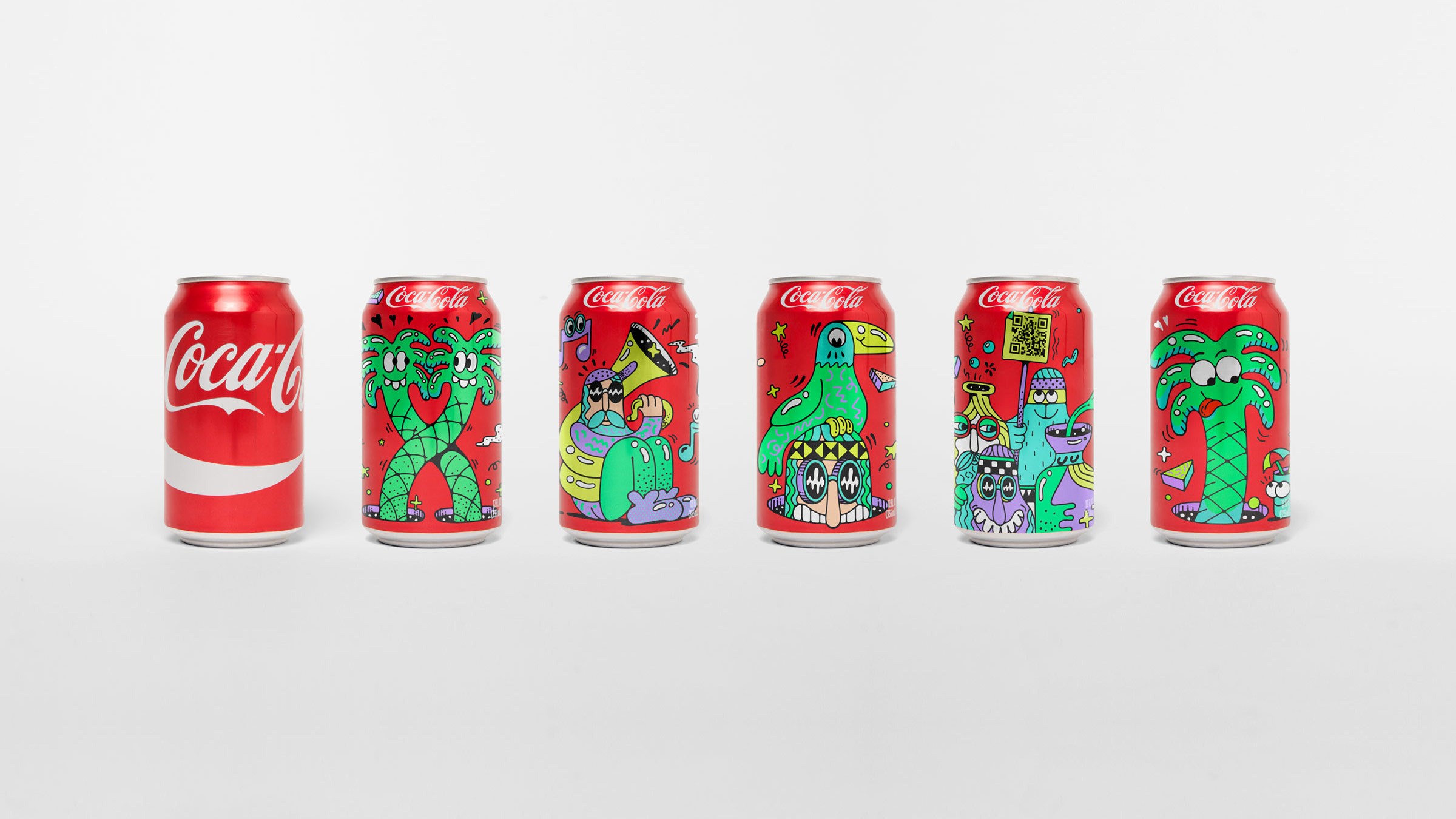
“You have to invest so much of yourself into your work that if you get caught up in questioning yourself too much, then that imaginative, creative spark can easily vanish.”
After college, you dove into design work and started National Forest with your friend, Justin. How did that come about? I met Justin at Art Center and the two of us had a mutual passion for art, design, and drawing. At the end of college we both thought, “Whoa, we’re either going to split up right now and go work for different companies or we can do this together and try to figure something out.” It was a really big decision. We chose to put our portfolios together, create a business, and try to get jobs. And that’s what we did: we literally put our illustration portfolios together and hustled our work around.
What were the first years of National Forest like? Looking back, are there any practical insights or things you did to actually keep the doors open? Yeah, we cold-called various art directors and businesses. We also went out to New York. At the time, there was an editorial building where we literally walked from floor to floor with our portfolio to show our work to a bunch of art directors. We hit up pretty much every contact we had.
The main thing Justin and I had going for us was that we had both worked pretty shitty jobs early on, as we all do. My dad owned a construction business and I learned how hellacious that type of work was. My first job from ages 12 to 22 was construction. Because of that, I knew what hard work was. Justin and I were determined not go back to the bullshit that we were previously doing and to work hard to get what we wanted: to make fun stuff and hang out together.
What was the first big gig National Forest did that made you and Justin realize you were making it happen? Right after we graduated, we got a pretty big illustration job for Rolling Stone. It wasn’t the cover, but it might as well have been. It was like, “Holy shit!”
From there, we decided to focus more on artwork and design versus commissioned illustrations. When we got the job to art direct Urban Outfitters’ printed catalogs, it was massive for us. We were in our early twenties and it was just the two of us doing everything from choosing the models to finding locations and photographers. That project was a good confidence builder because it forced us to learn so much shit we didn’t know.
“What’s most important to me is to remember that this is my passion. Even if I was working somewhere else, I’d be trying to do this, so I might as well try to do it for myself.”
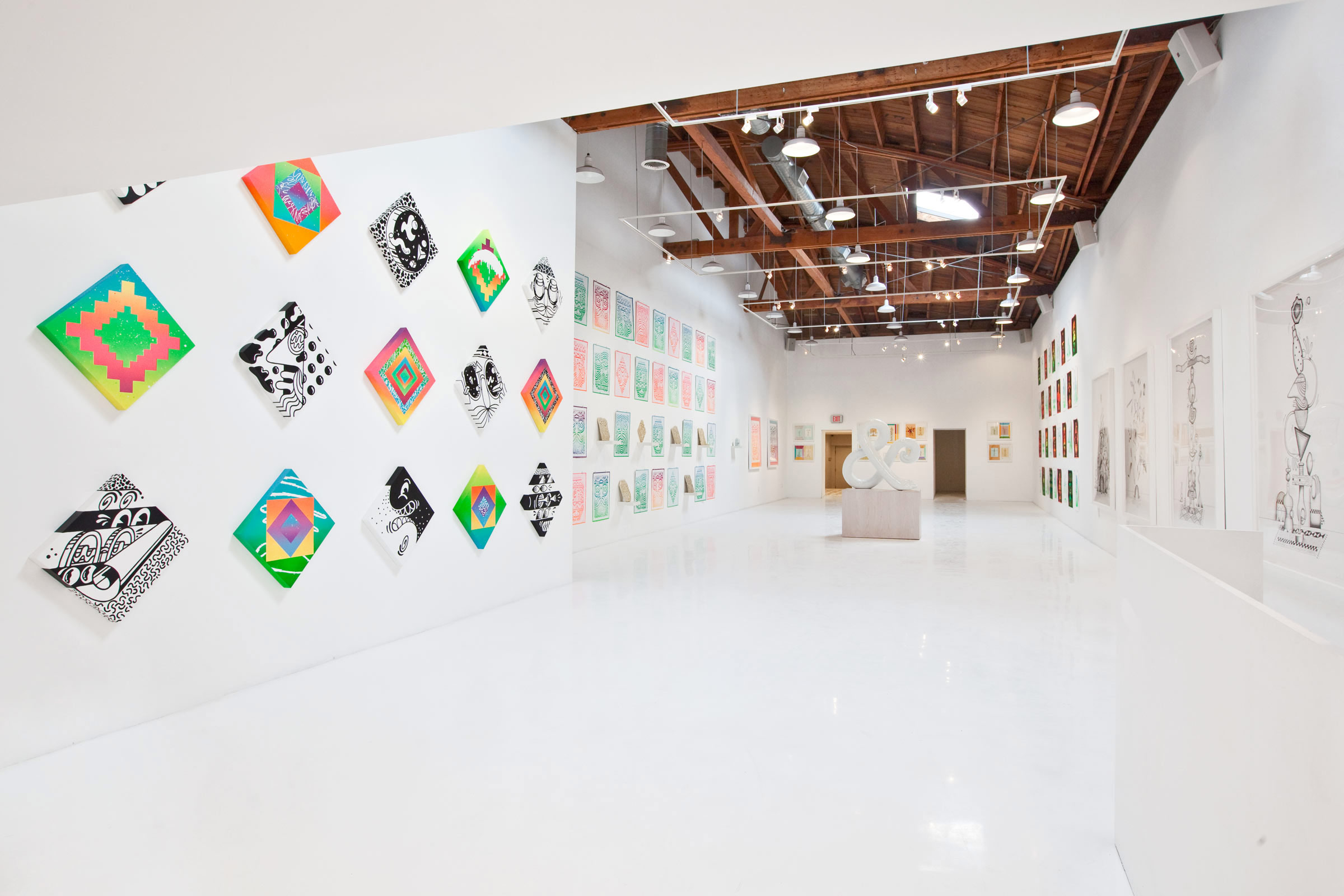
Very cool. In addition to your agency, National Forest, you do personal work under the moniker, You & I, right? Yeah. A lot of people consider it illustration, but it goes back and forth between illustration and art. I like drawing, so my work tends to feel illustrative, even though a lot of the work is not necessarily illustrating in a traditional sense, like what Saul Sternberg did for the New Yorker. It’s more vague and surreal.
What advice can you offer to someone who wants to start a business? I’ve recently talked to several friends about this. When we started National Forest, I thought, “We need to incorporate now, get the tax dude involved now, start financial planning now, and I need to make sure I’m paying estimated quarterly taxes now.” You can get consumed by every facet of business before you jump into what it is that you’re interested in.
Now my advice is different. For the first year, focus on bringing work in. Bring projects in, execute them as best as you can, get them out the door, and move on to the next one. Focus on completing the work and billing for it. Make sure you spend time on executing the work, because you’re only going to get paid for what comes in and goes out. After your first year of work, then you can start to consider the taxes, trademarking, and all of the bullshit it takes to run a business. If you make it past that first year and you’re still into it, then do it. If you’re not, then there’s no real loss. At least you know that it’s not your passion.
What’s most important to me is to remember that this is my passion. Even if I was working somewhere else, I’d be trying to do this, so I might as well try to do it for myself. Finding what you’re passionate about can be a hard thing. Even when you hit that point, you have to figure out what it is specifically within that passion. You have to ask yourself what you are you good at and what you are bad at.
“What do you find yourself doing or wanting to physically do? I’m not talking about something you wistfully daydream about. There’s a big difference between what you actually enjoy doing and the daydream of what you want your identity to encapsulate.”
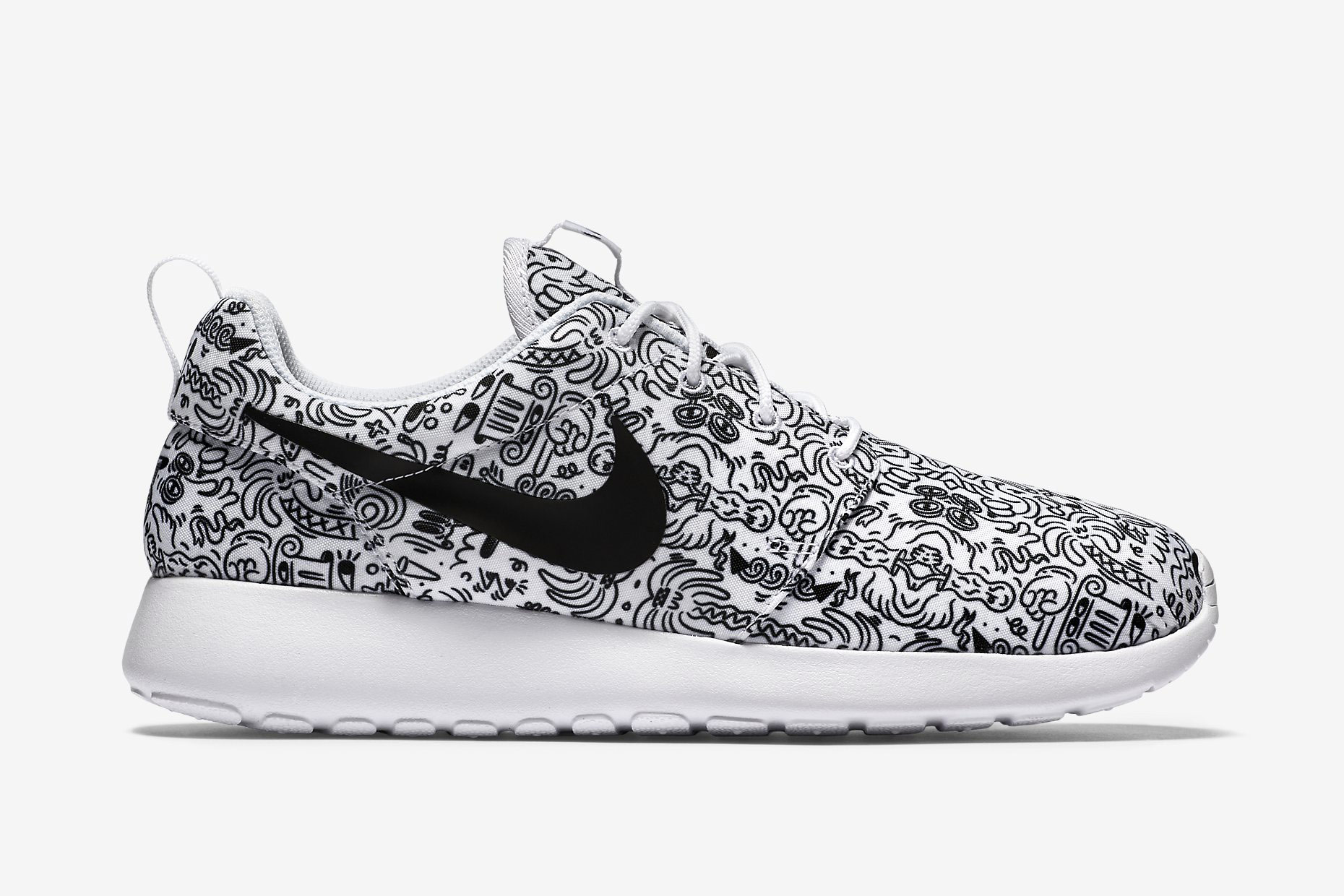
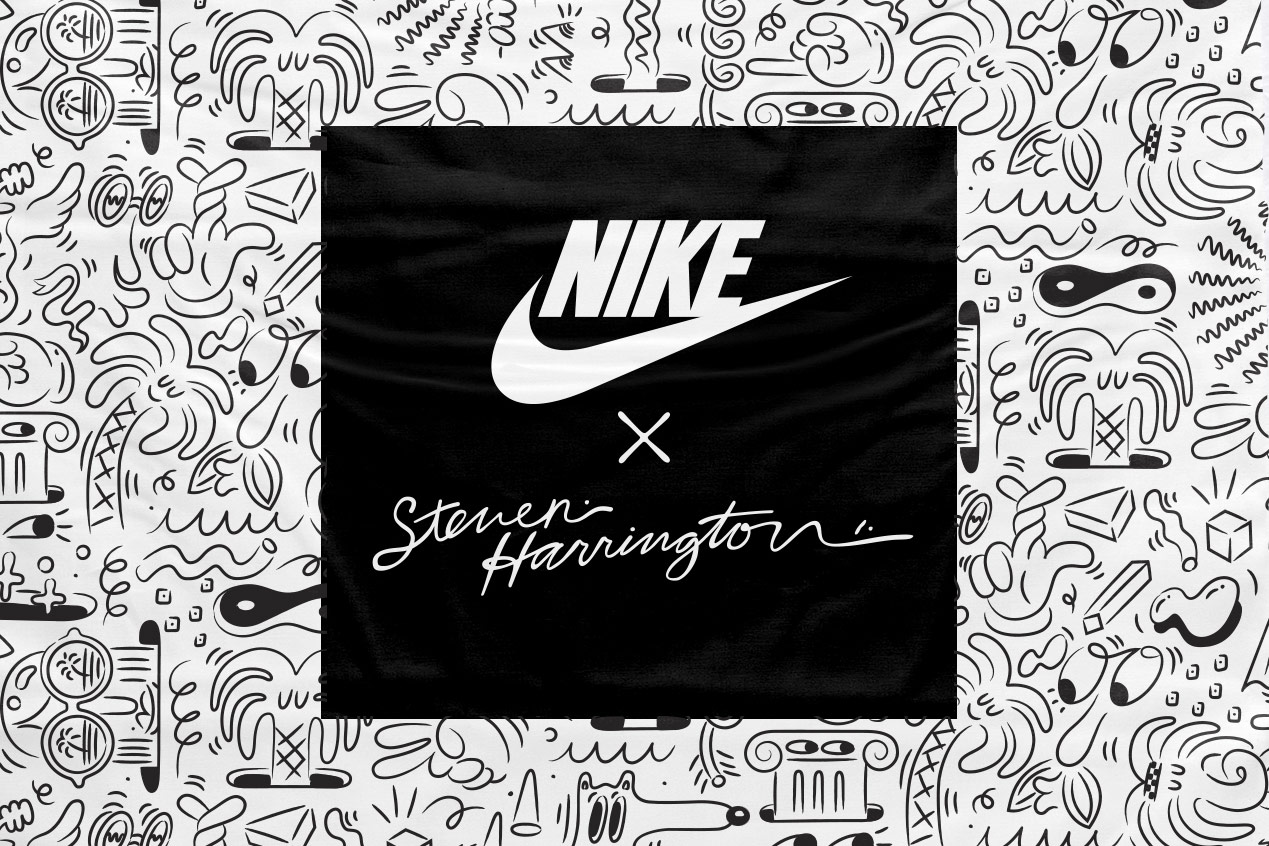
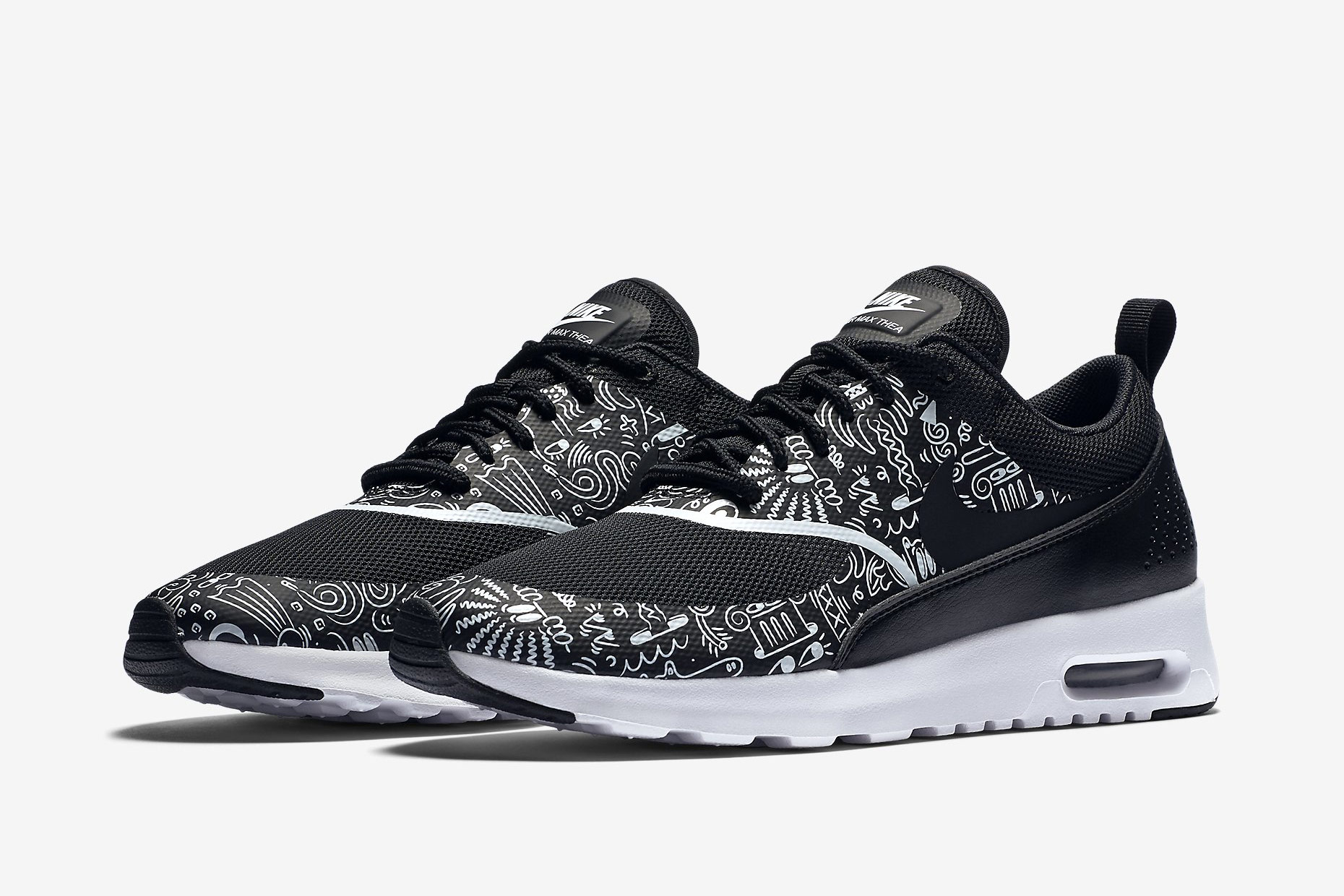
It’s hard to decide what to focus on career-wise straight out of high school. You don’t necessarily know what your contribution is yet, or you don’t know what you’re good at because you haven’t tried enough things. How do you determine what to focus on? I figured it out through experience. What do you find yourself doing or wanting to physically do? I’m not talking about something you wistfully daydream about. There’s a big difference between what you actually enjoy doing and the daydream of what you want your identity to encapsulate.
For example, if you don’t constantly pick up a pencil to draw and want to do that for large periods of time, then chances are that you don’t like drawing that much. If you don’t pick up a guitar or find yourself attracted to music and surrounding yourself with people who make it, then music probably is not for you.
That said, I think it goes both ways: there are plenty of people who find their passions in their 50s, 60s, and 70s. I can see myself evolving within art and drawing, and I hope I will. It’s awesome to think that all of us could someday evolve into something completely unexpected. That’s just as awesome as the initial thing you fall in love with.
It’s interesting to think about our tendencies as children, too. Thinking about your natural inclinations and what you were drawn to or what experiences you really enjoyed over others can give insight into what you might explore as a starting point. Yeah, I think so. I remember a big turning point for me in school, which I still think about. I was trained academically during the first half and then turned loose to make whatever I wanted. It was kind of frightening. We had done lots of figure drawing courses and were forced to do academic drawing, but I had a moment when I thought, “Wait, if I’m not going to paint naked ladies for the rest of my life, what am I going to do?”
I had that summer off and I mentally dug deep down into my mind to remember where I was before I went to art school. I was trying to grab ahold of what I thought was real within my life and what was important to me. A lot of it had to do with music I was excited about before school, so I turned that subject matter into gigantic art projects for school. It was a big reminder that it’s easy to lose your personality while in school or in the day-to-day of working with clients. It’s easy to lose what you’re truly passionate about—or your natural tendencies, as you said.
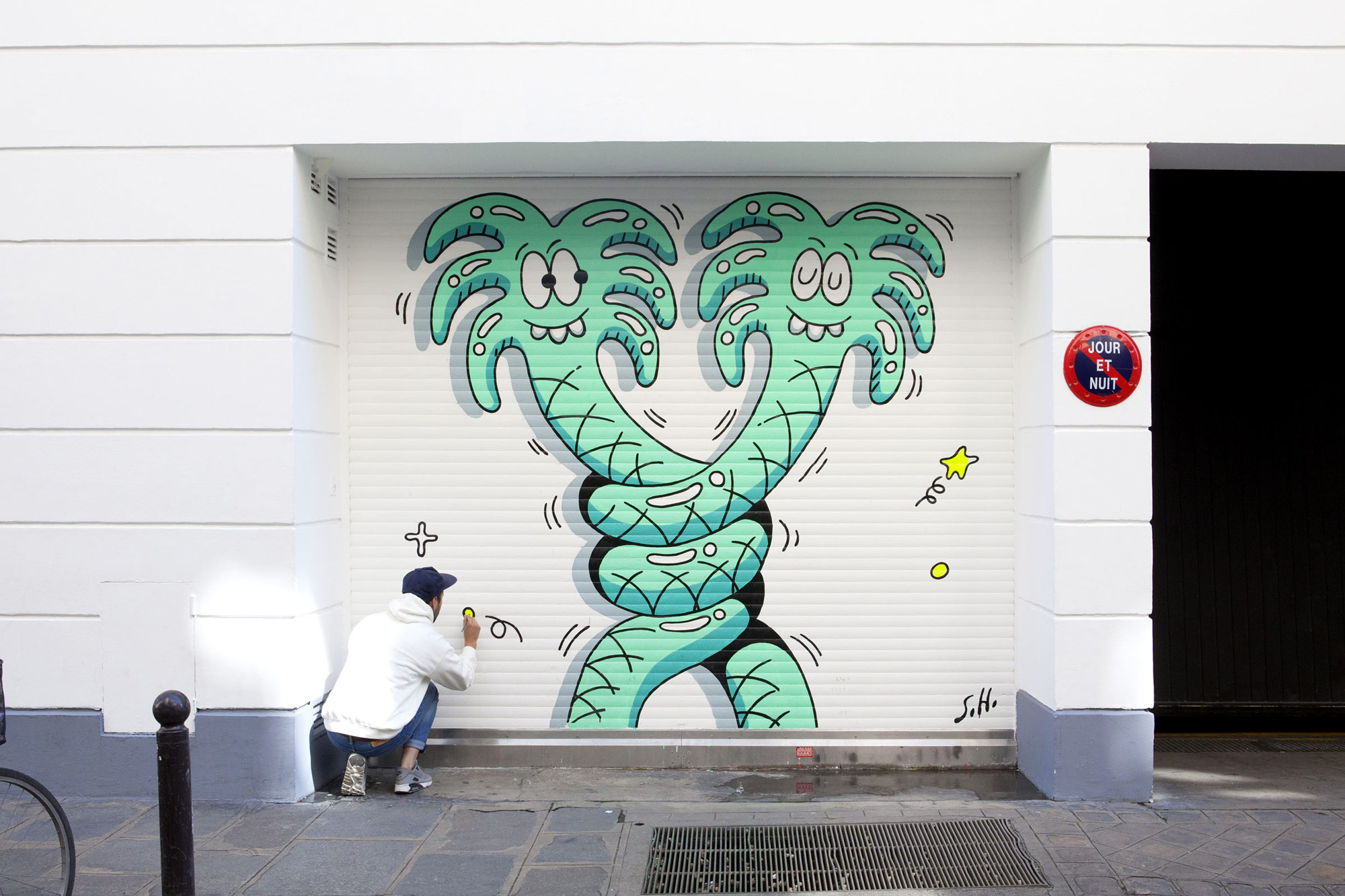
“…there are plenty of people who find their passions in their 50s, 60s, and 70s….It’s awesome to think that all of us could someday evolve into something completely unexpected.”
Yeah. Let’s talk about your voice. It’s fun, vibrant, fresh, and definitely recognizable. Did that moment you just described—thinking about music and the things that inspire you—help you find your voice? Was it a conscious evolution for you? No, it wasn’t. It was actually something I was trying not to do, which is bizarre for me to think about now.
I read a book by Milton Glaser, and he talked about the big difference between art and design: art is a really personal dialogue that you have with yourself over a long period of time. Everything you make has a direct relationship or correlation with the previous piece you made. It’s about exploration, which you don’t necessarily need in design work. In design, you feel more free to play with general aesthetics, approaches, and perspectives because each project is completely and absolutely different from the previous project.
I really liked that. I liked how he talked about art being personal poetry. Over time, I embraced that. Everything I make in my own time is poetry, even if it looks like an illustration or even if it starts to become client-based. It’s about letting myself explore new ideas and be intuitive with what it is that I like doing, which I’ve realized has to do with drawing.
Over time, it has naturally become this weird universe I’ve created where certain rules apply. I talk about this with friends and other artists all the time: once you develop a weird world and so much of it makes sense, you start coming back to it, because over time you’re chipping away and trying to make sense. You create this world because it feels right. For me, it’s a good reflection of where I am at this point in my life.
“I always thought there was something wrong with me because I grew up hearing interviews with people who said, ‘Oh, I love telling stories.’…what about when you don’t want a story? What if you just want to feel something?”
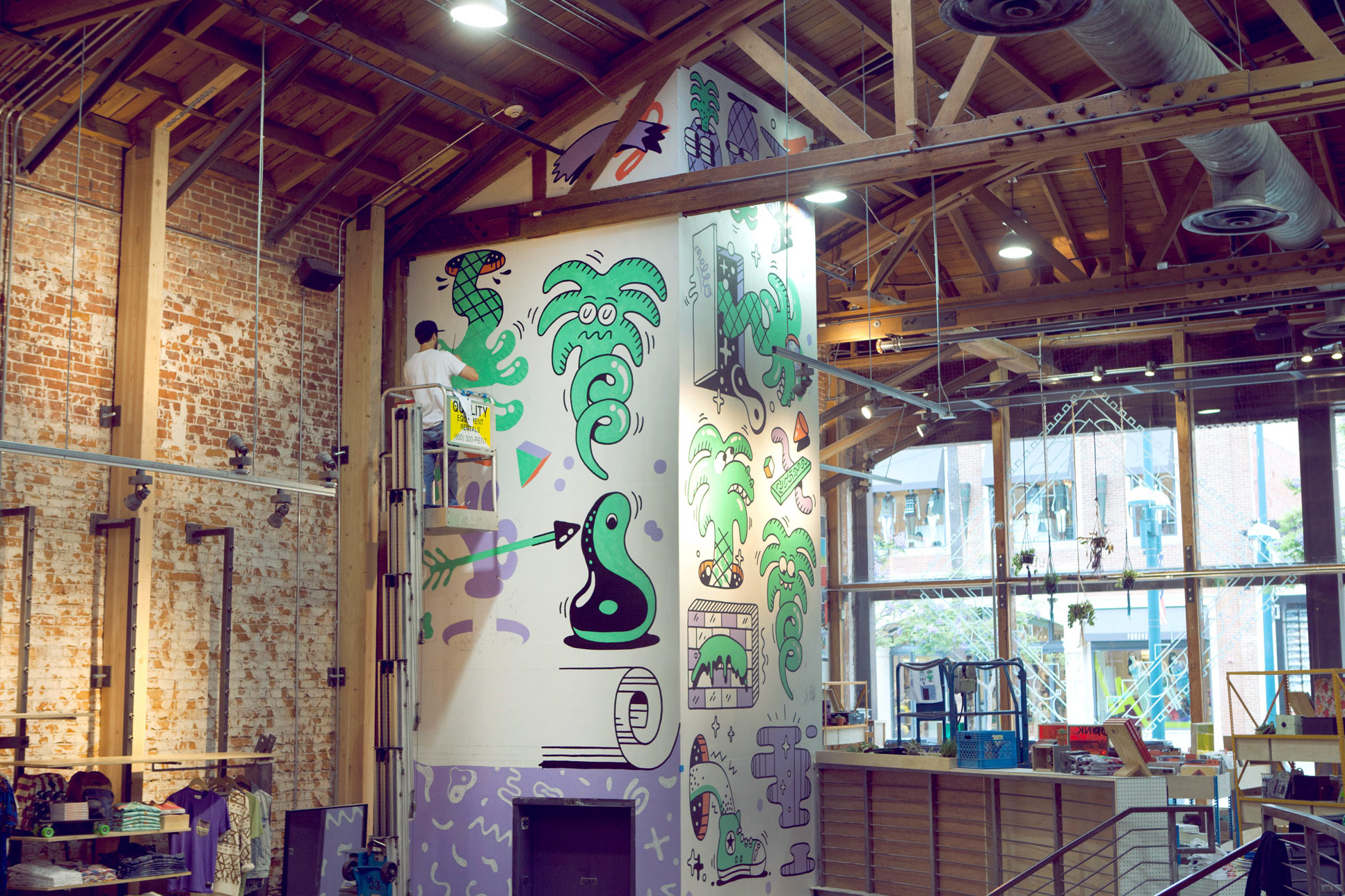
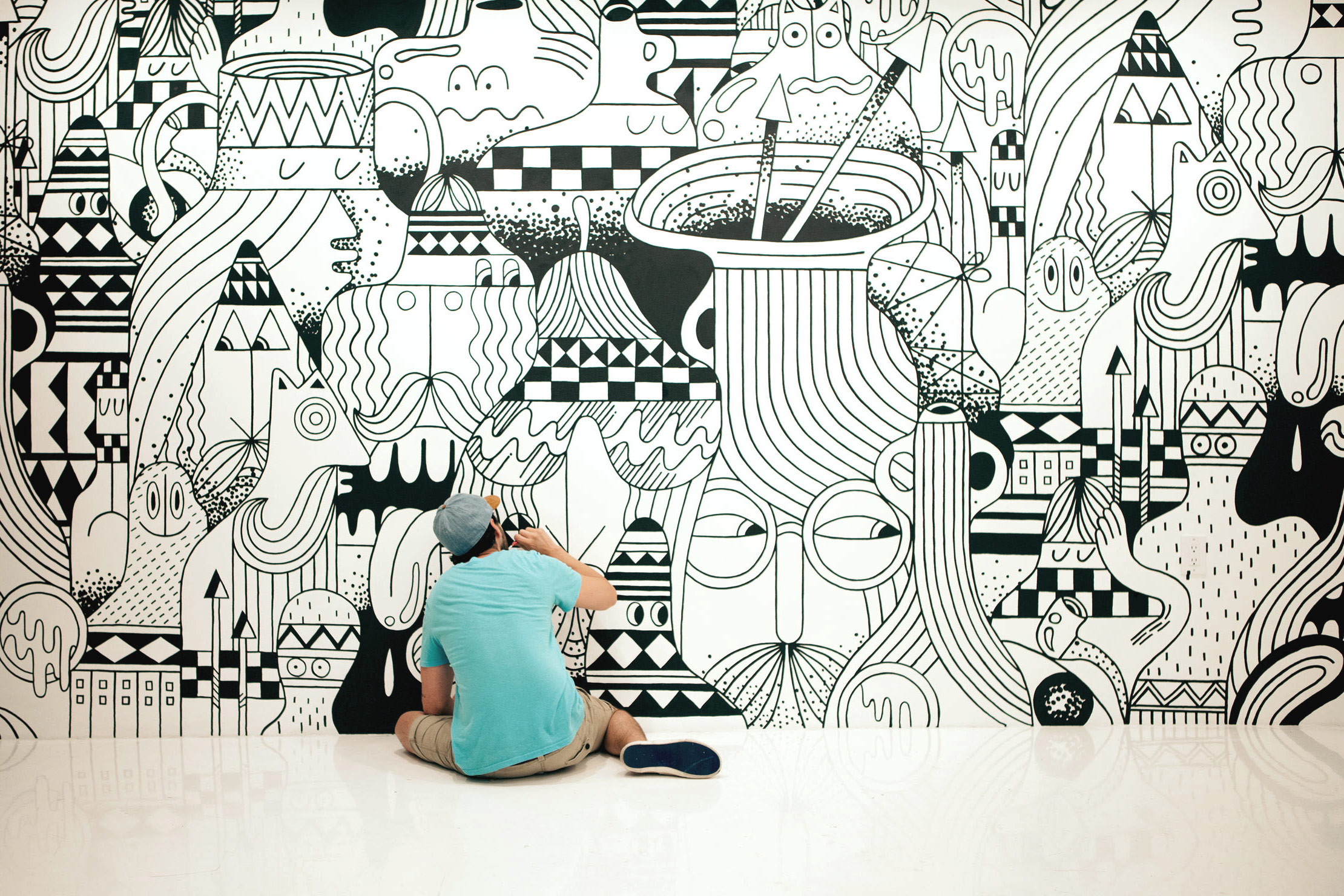
Do you think one of the reasons you were able to develop such a strong voice with your personal work was because you had the commercial work as your bread and butter and there was no pressure no make money from the personal stuff at the start? It didn’t cross my mind then, but it does now. I completely agree with you.
It’s like I’ve hit this weird moment of, “Fuck it, I can make this into whatever I want it to be,” because like you said, it’s art. I’m not reliant on it. Even if another Nike doesn’t come around, I’ll continue making whatever the hell I want. And you know what? It’s going to look like this weird, cartoon world. Some people are going to look at it and say, “Dude, this fucking guy is all about cartoons and it’s really naïve—is it for a kid?” (laughing) I’ve thought about that recently. It’s so weird what my work is turning into, but at the same time, I let myself intuitively make it. I love cartoons: I love that language, and I love bright, big, pop-y stuff.
I wish I was into minimalist, smart design. I wish my work looked like a Rothko or a Rauschenberg. I would love for my work to be that, but it’s just a fucking weird, crazy cartoon world where anything is possible. At the same time, it doesn’t really make sense. Abstract art doesn’t have all of the answers we want, and that’s why I love it.
No, but it has a lot of feeling. Exactly. That’s what I’ve tried to create. I always thought there was something wrong with me because I grew up hearing interviews with people who said, “Oh, I love telling stories.” Films are all about stories, and it’s about great storytelling. Don’t get me wrong—I love stories—but what about when you don’t want a story? What if you just want to feel something? What about the artist who believes there’s another language and grouping of emotions that you can’t express through words?
Speaking of feelings, you recently did a series of paintings addressing emotions, specifically anxiety. Tell me more about that. Yeah. It was the last big show I did in Paris at a place called Colette. It was a series of paintings I slowly chipped away on over the last year and a half. I kept coming back to the anxious thoughts that we many of us constantly have. After making one or two paintings, I realized they were totally about these weird, anxious moments I was having.
I think we’ve all suffered and are continually suffering from anxiety, stress, and overworking ourselves. Through the paintings, I was creating practical jokes on these emotions in hopes of not only shedding light on them, but also getting my brain to not take the anxiety so seriously. Anybody who has suffered from anxiety attacks or ongoing anxiety knows that more often than not, it about absolutely nothing. It’s a self-afflicted thing you keep doing to yourself.
“After making one or two paintings, I realized they were totally about these weird, anxious moments I was having. Through the paintings [in the Wavy Days series], I was creating practical jokes on these emotions in hopes of not only shedding light on them, but also getting my brain to not take the anxiety so seriously.”
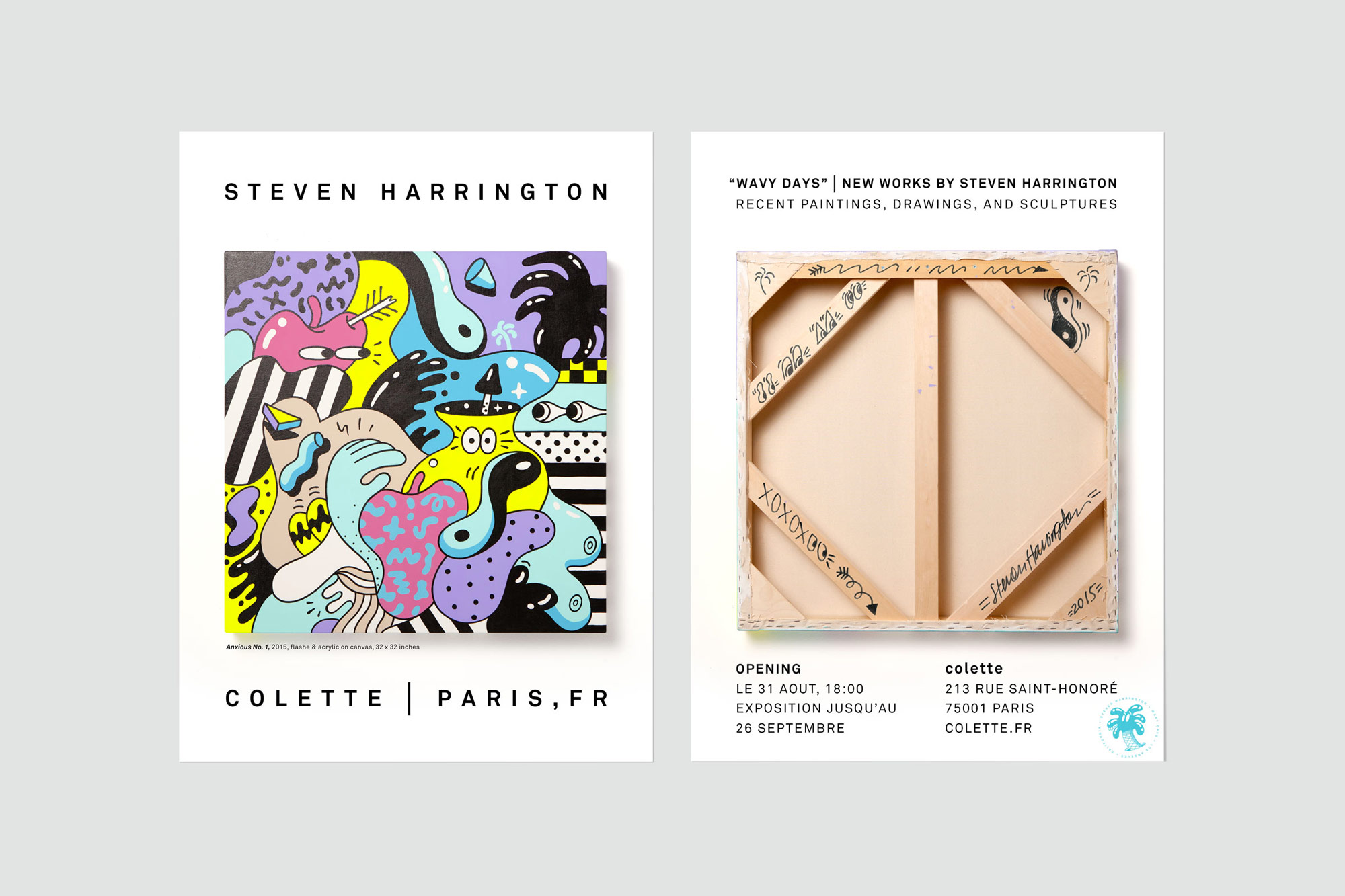
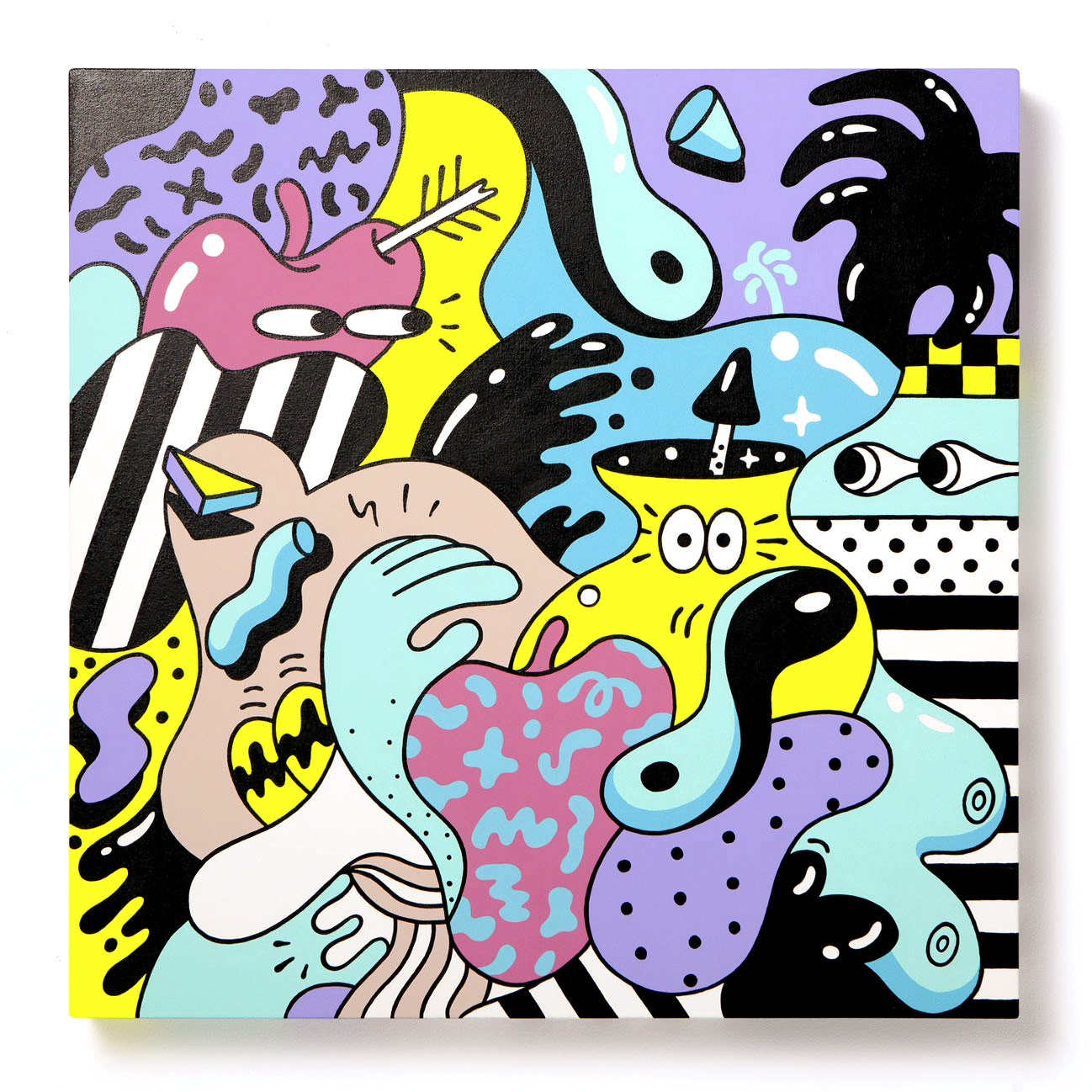
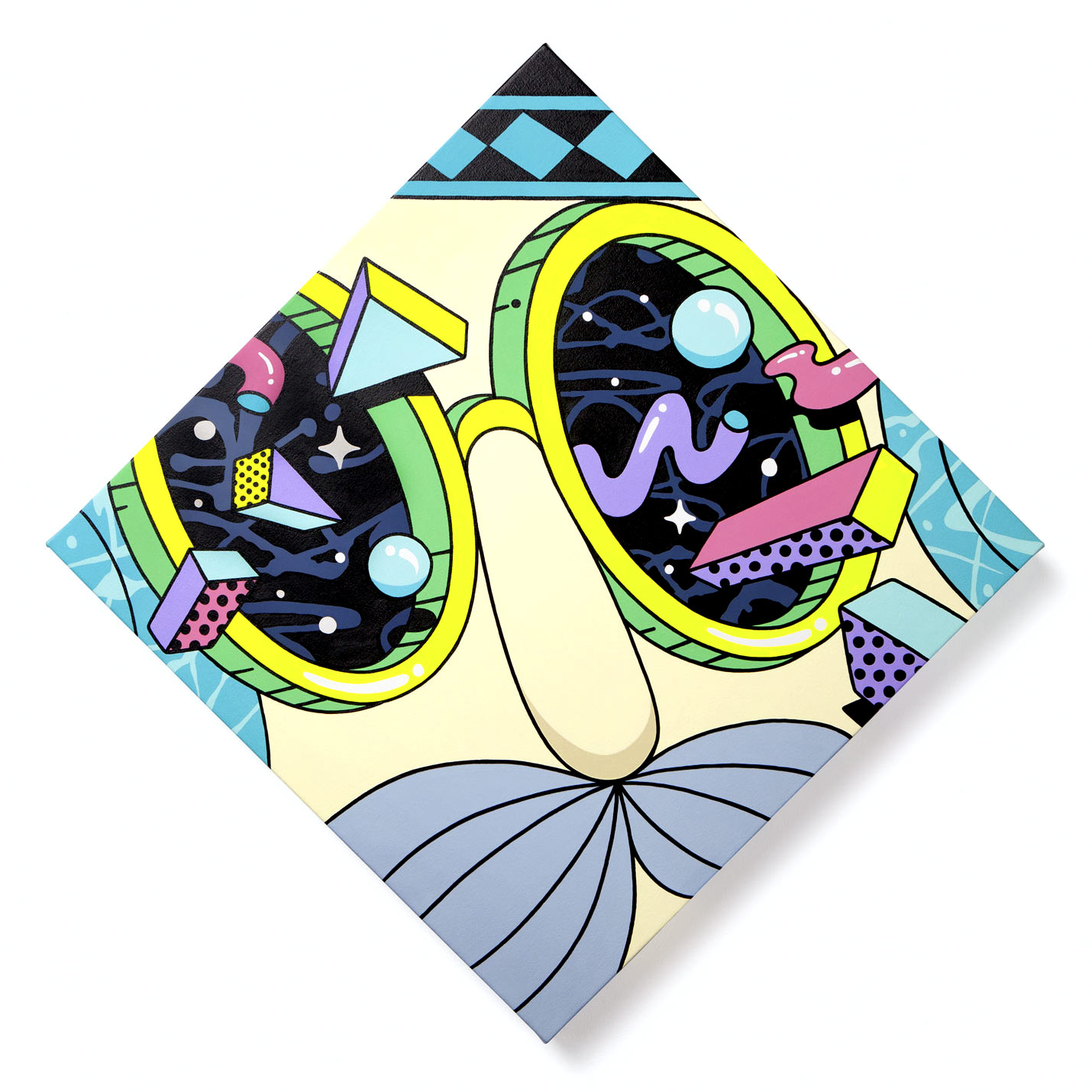
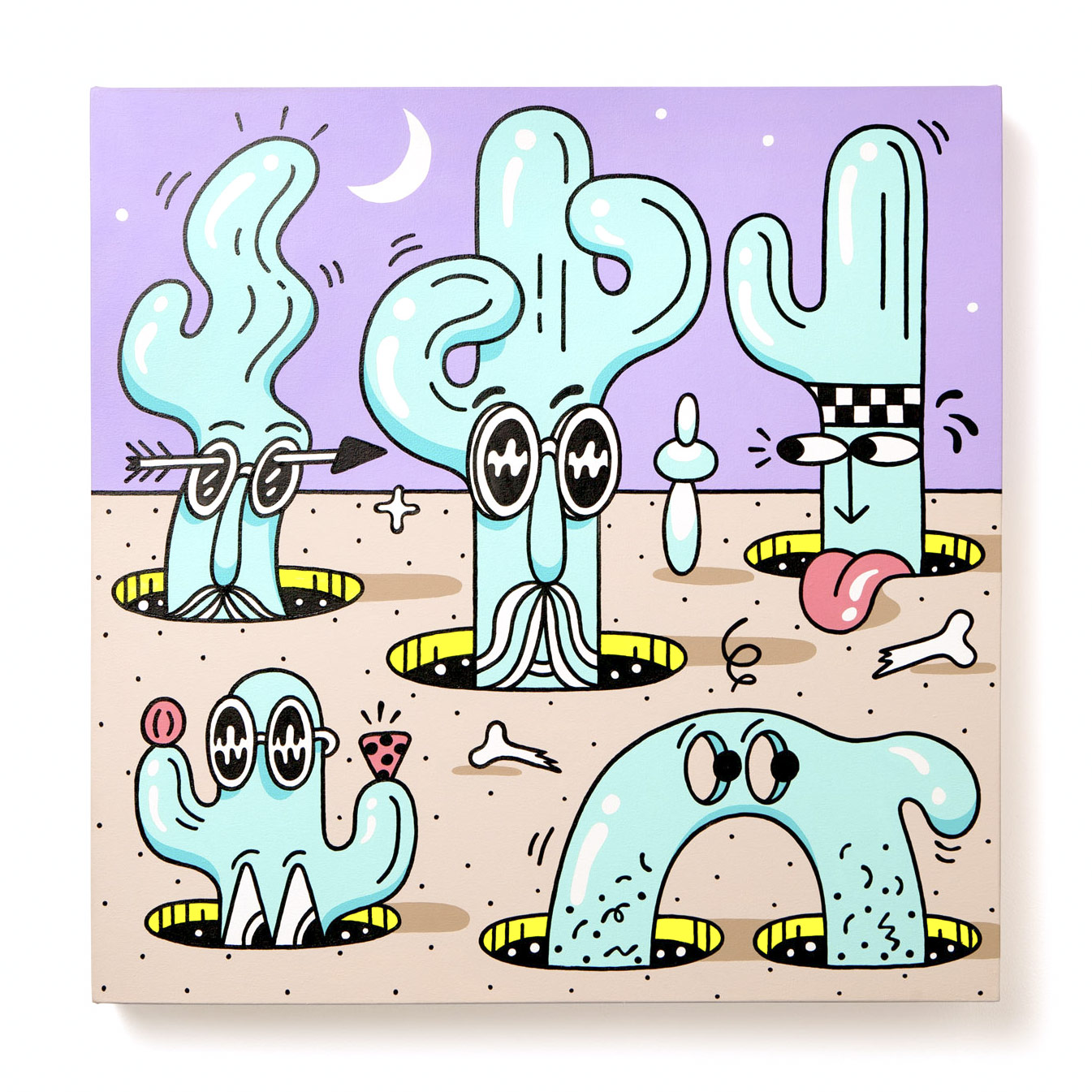
Being real about our struggles makes us feel vulnerable, but it’s important. I love that you embraced your anxiety and used it to create art. In showing the series and talking to the press about the pieces, what kind of response have you had? It was interesting because when I put that show together, I thought, “Man, this is so strange, and it’s definitely opening up this very personal thing.” But I got great feedback from the show. There were so many people who came out and took photos with the work who completely related to it.
We live in this weird, fucked up, competitive kind of culture-slash-society where any sign of weakness is a negative attribute. Or at least we’re trained to think that. So we’re all dealing with this shit, and instead of running or painting or dealing with it in a somewhat responsible way, a lot of us end up knocking on the door of the medical industry or taking drugs or drinking too much or smoking too much or exerting it in other ways.
Anxiety is a shitty emotion to have to deal with. I recently talked with a friend about it: it’s kind of like the closest emotion you can feel to death. It’s a really scary feeling and you don’t know what it is, but you know that it’s horrible. It just sucks, and we all struggle with it, but we rarely openly talk about it.
Right. And I think the Internet perpetuates that. Everything is seen as a brand now. We’re pressured to present everything, including our own lives, as perfect and glossy. In contrast, I think people are looking for things that are real and honest, and not commodified. The question we have to ask ourselves is: Am I going to be the first one to be vulnerable? Totally. All we’re looking for is honesty—that one little ounce of honesty in the world, whether it’s found within art or other things. Everything comes back to that in some way, shape, or form.
I once heard a really cool interview with Tom Hanks. The interviewer asked him, “What makes a piece of art good to you, whether it’s film or music?” He said, “Every great piece of art asks the eternal question that we all have, which has to do with existence.” As generic as that sounds, it has to do with asking the eternal question: Why? Why are we here? What are we doing? What is this place?
What I enjoy about painting and art is that it can lead to conversation about anything. It might lead us to talk about death or being afraid or anxiety, and then hopefully it will get us to ask the larger question about what the human experience means to each of us. To me, that’s a much more interesting conversation.
“What I enjoy about painting and art is that it can lead to conversation…It might lead us to talk about death or being afraid or anxiety, and then hopefully it will get us to ask the larger question about what the human experience means to each of us.”
